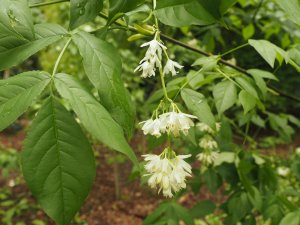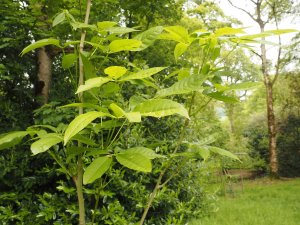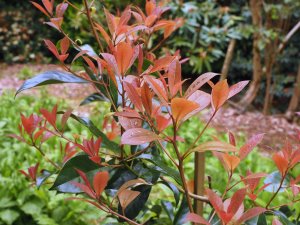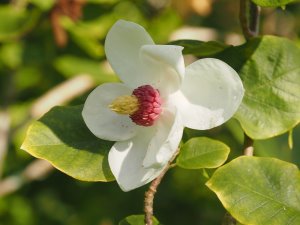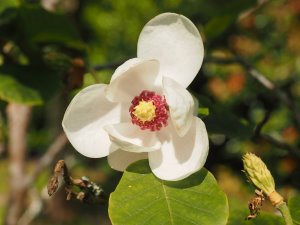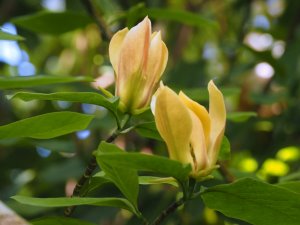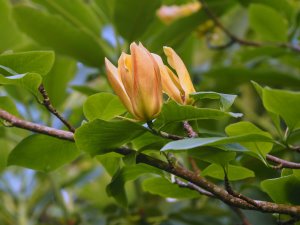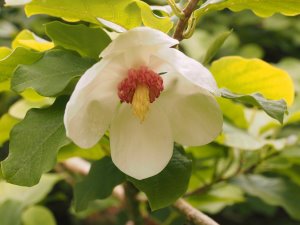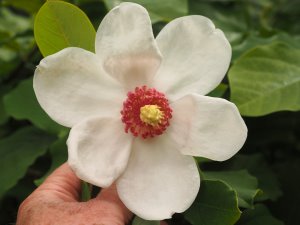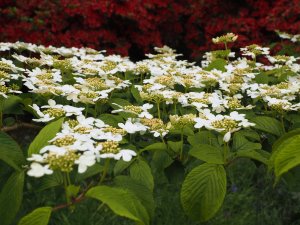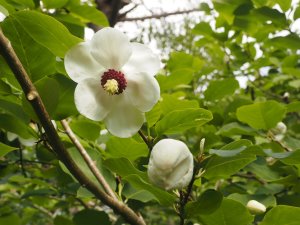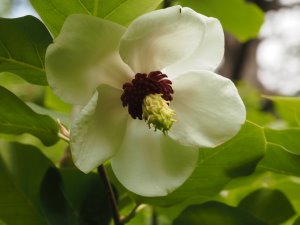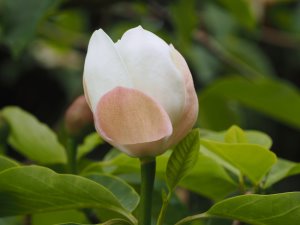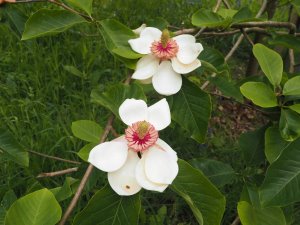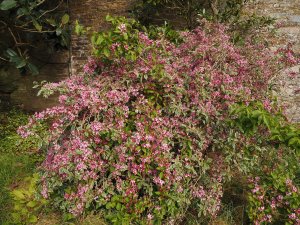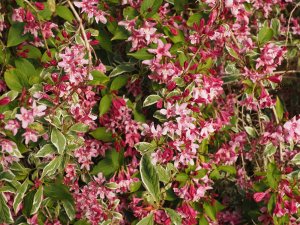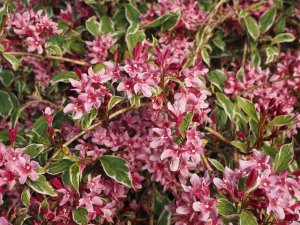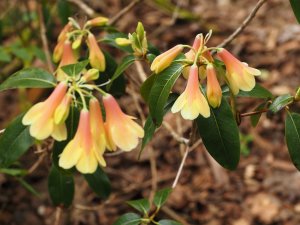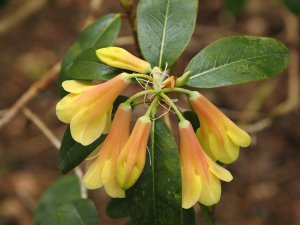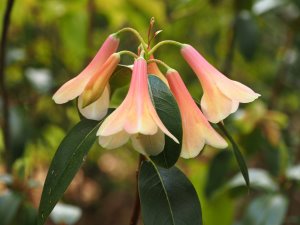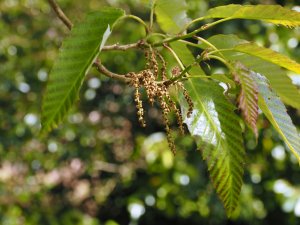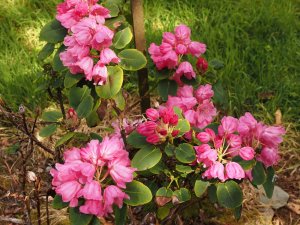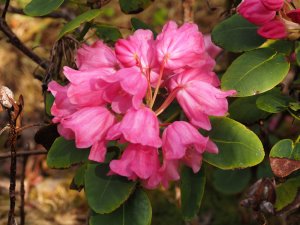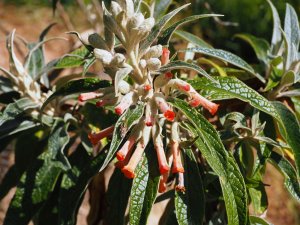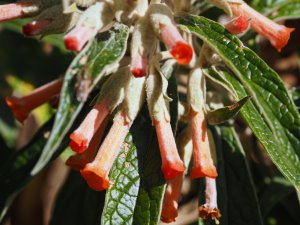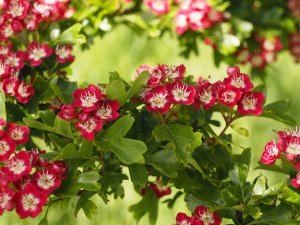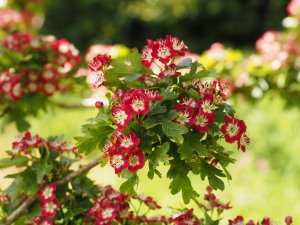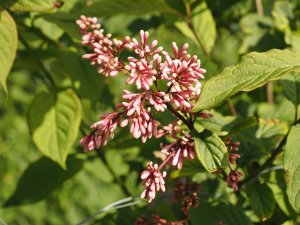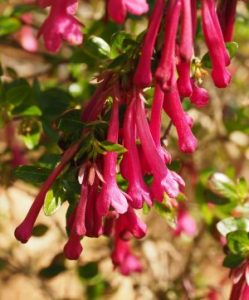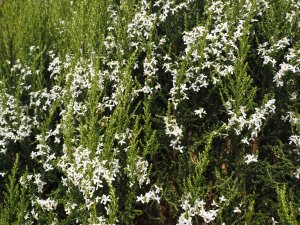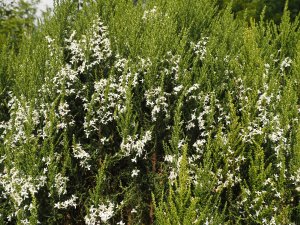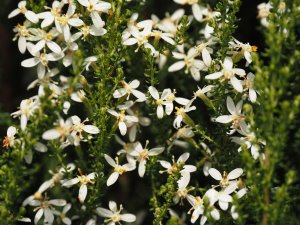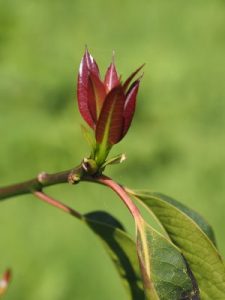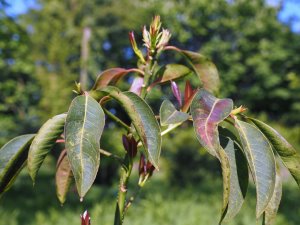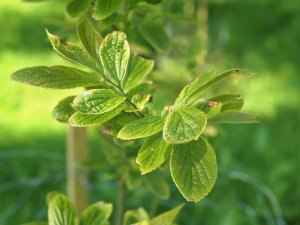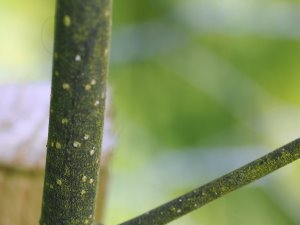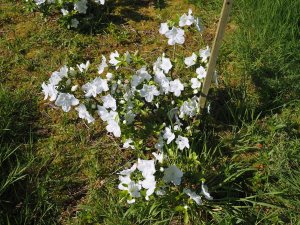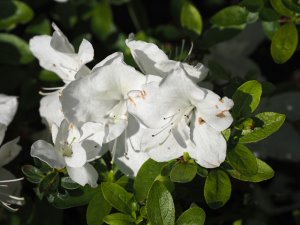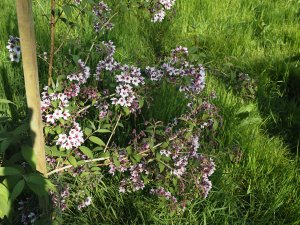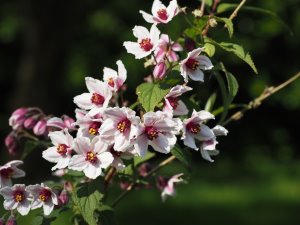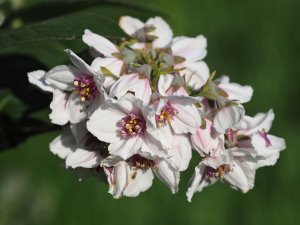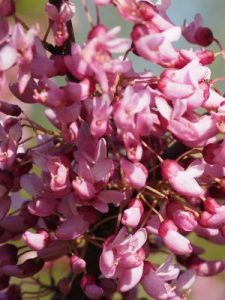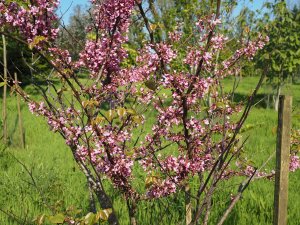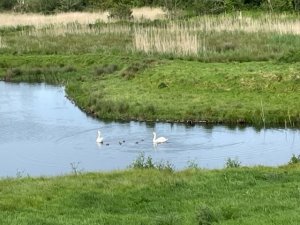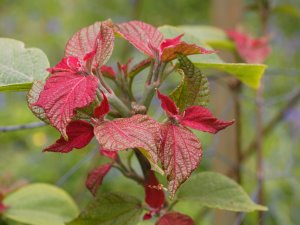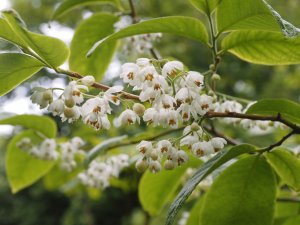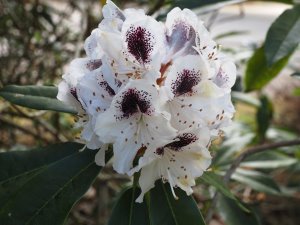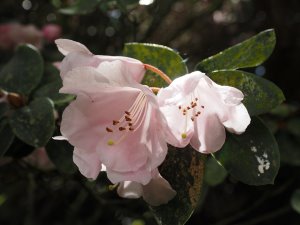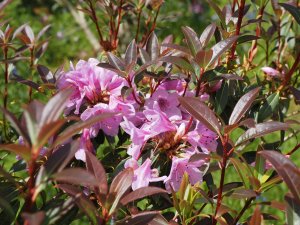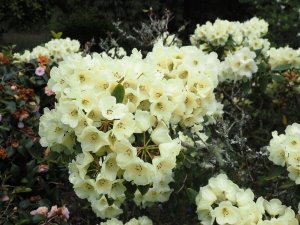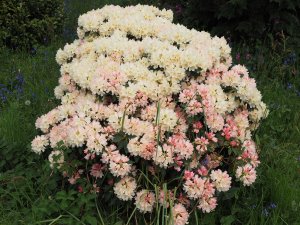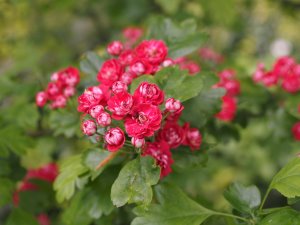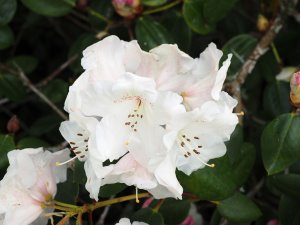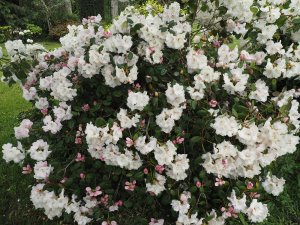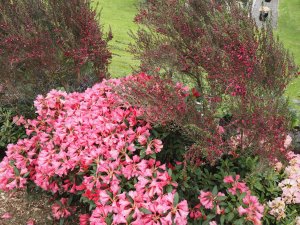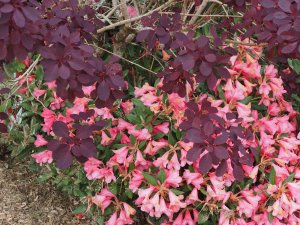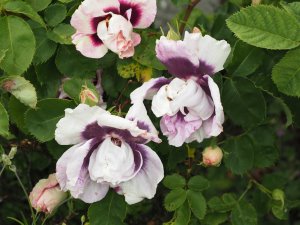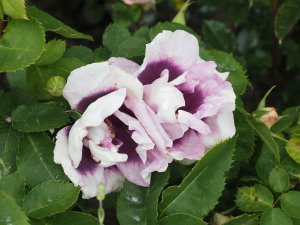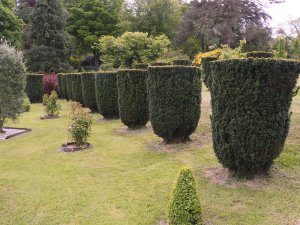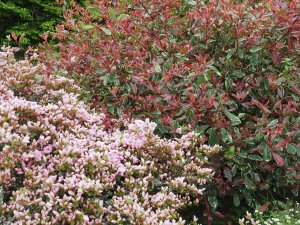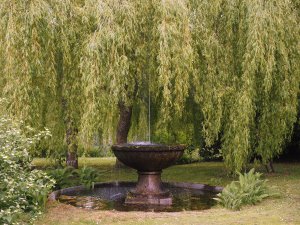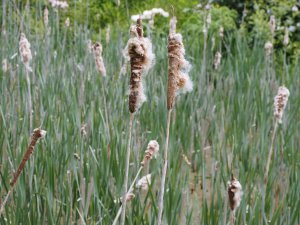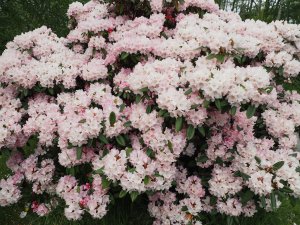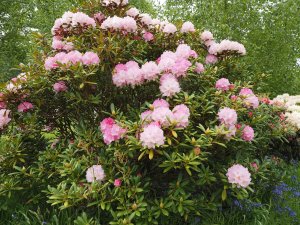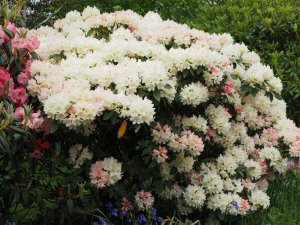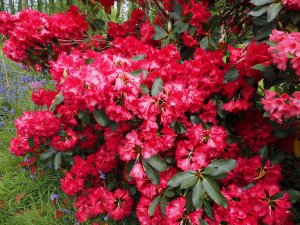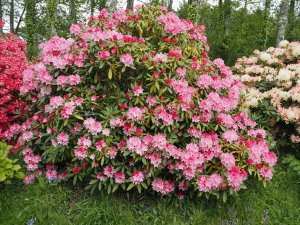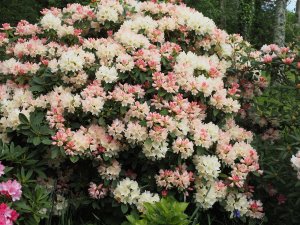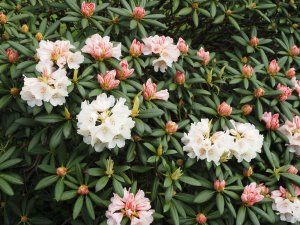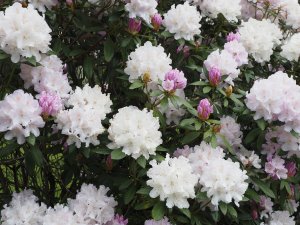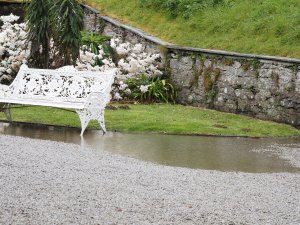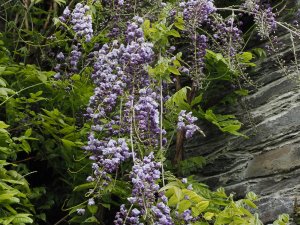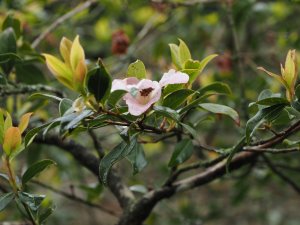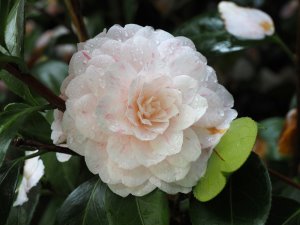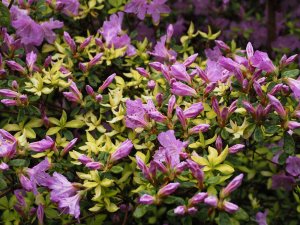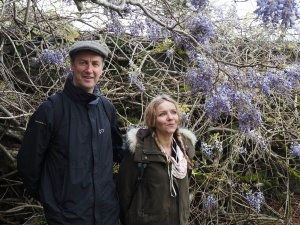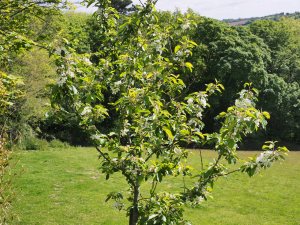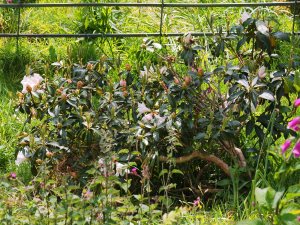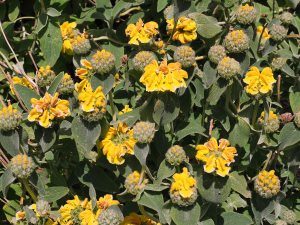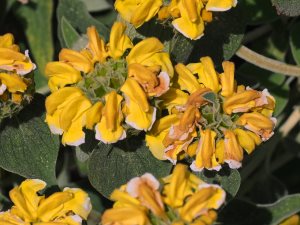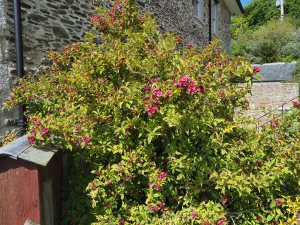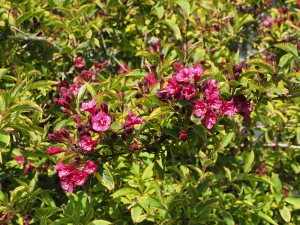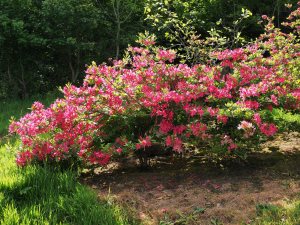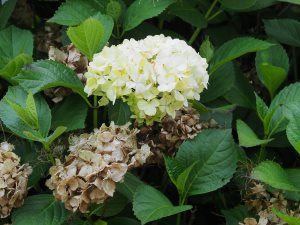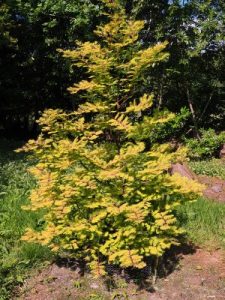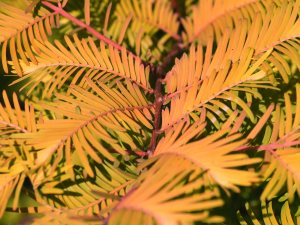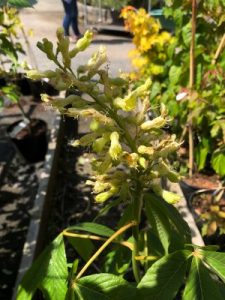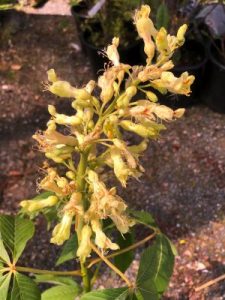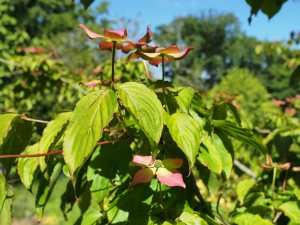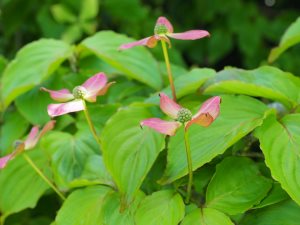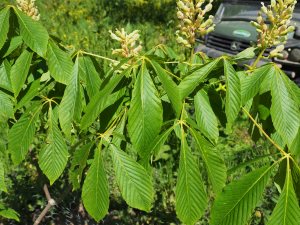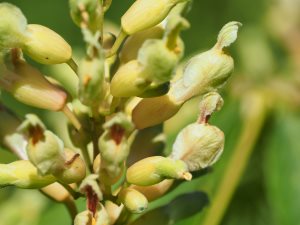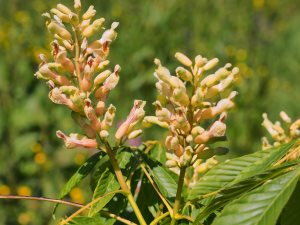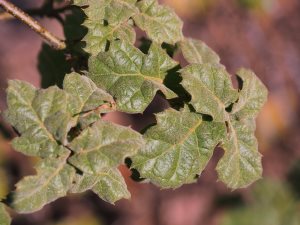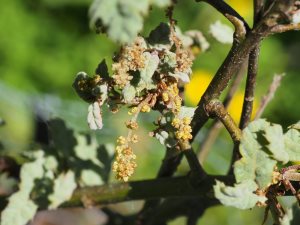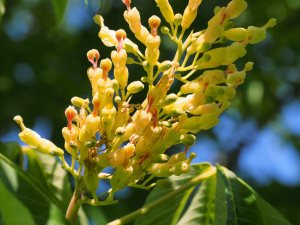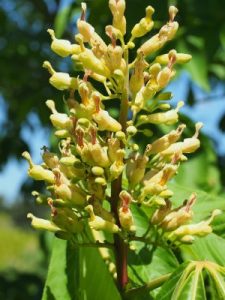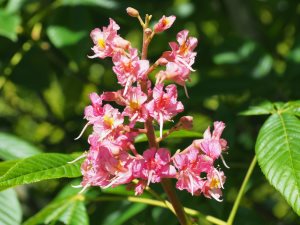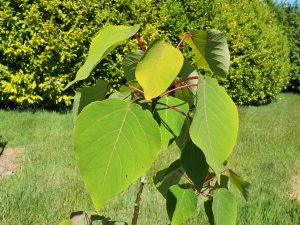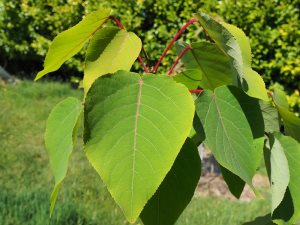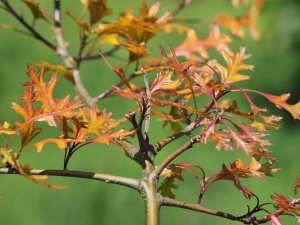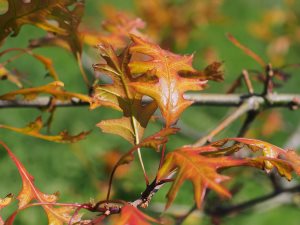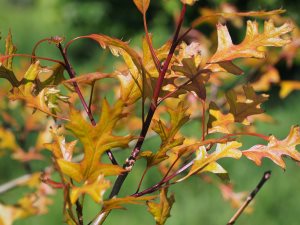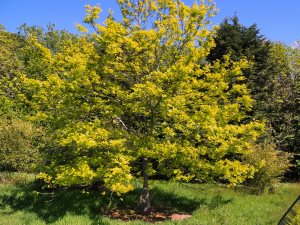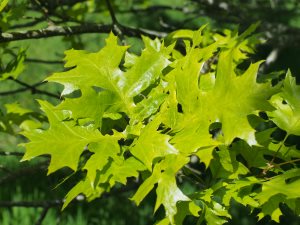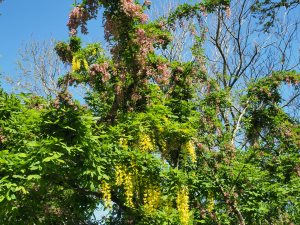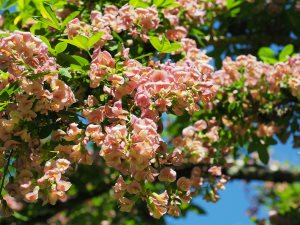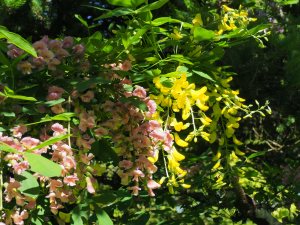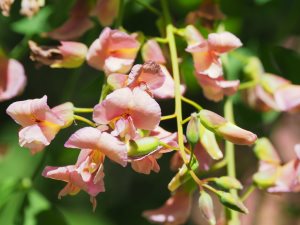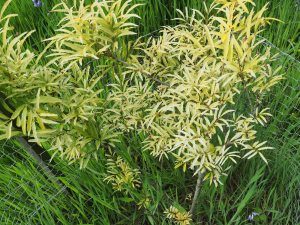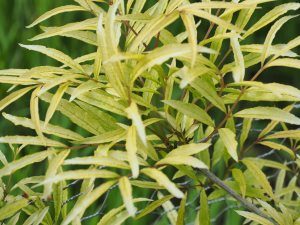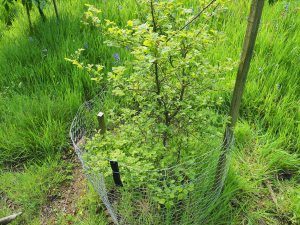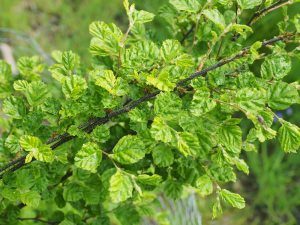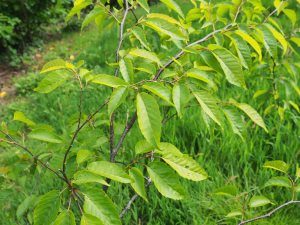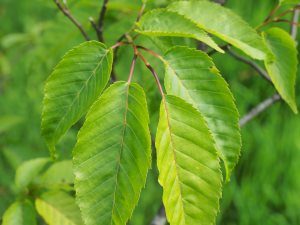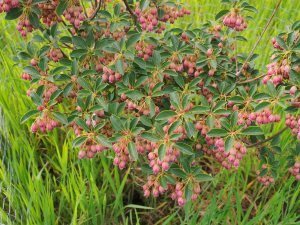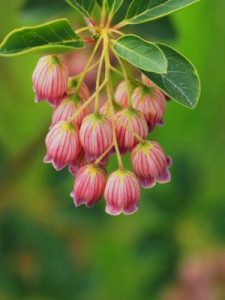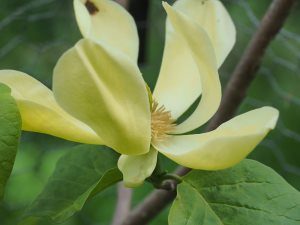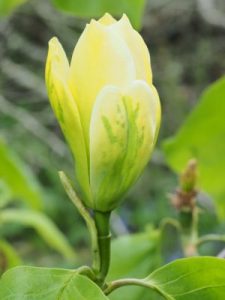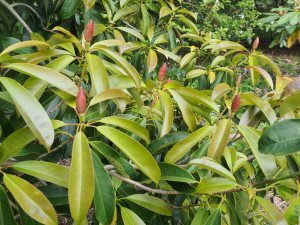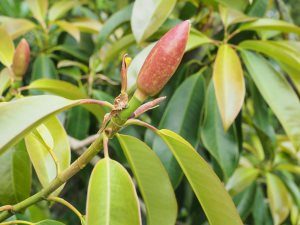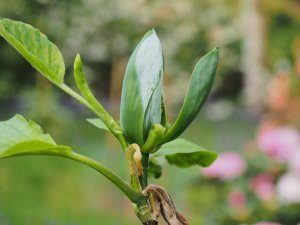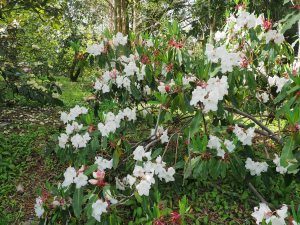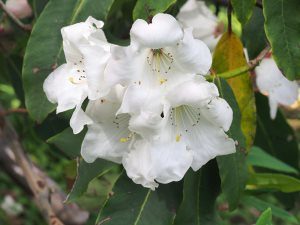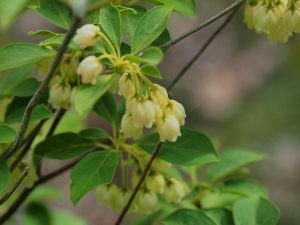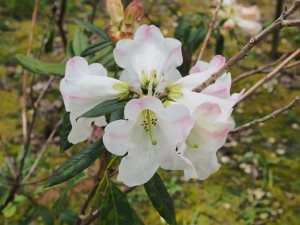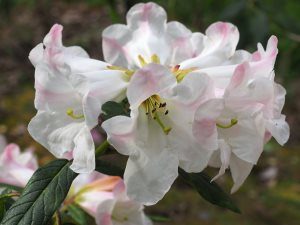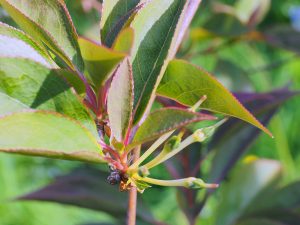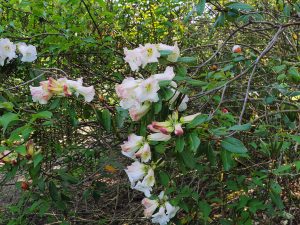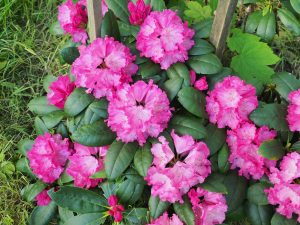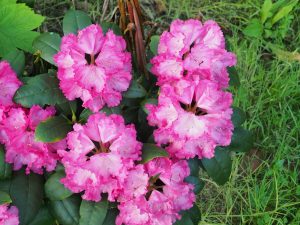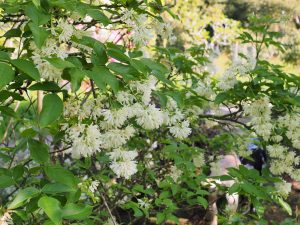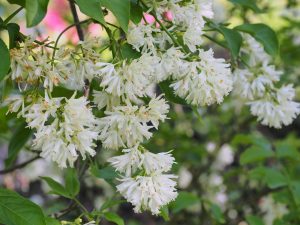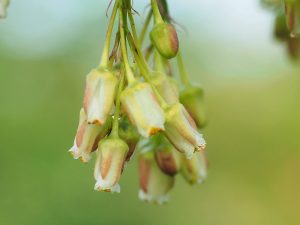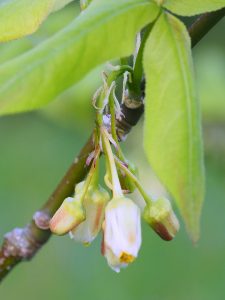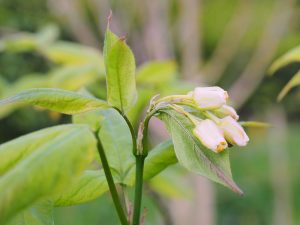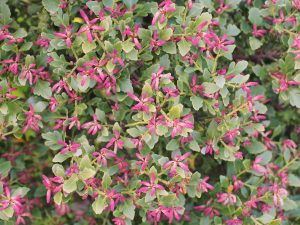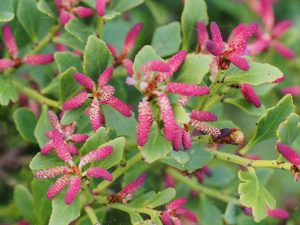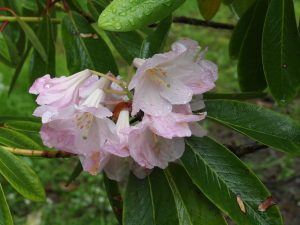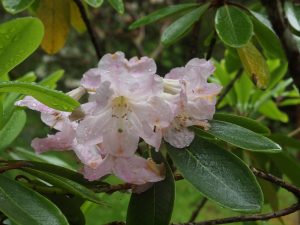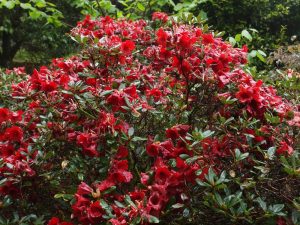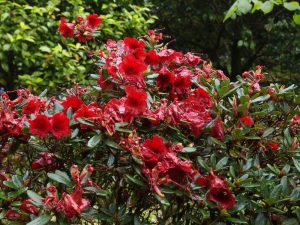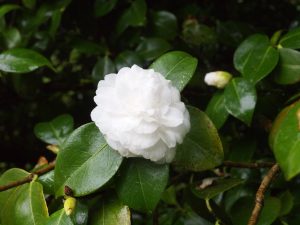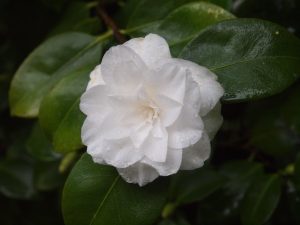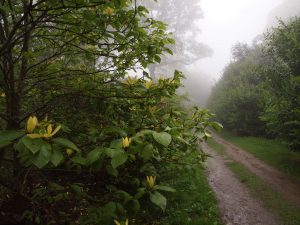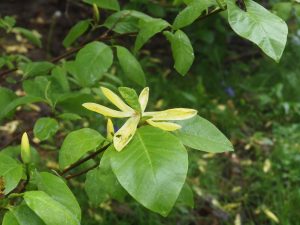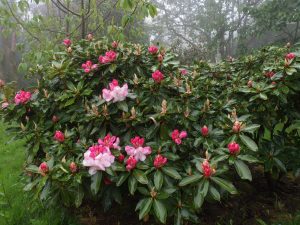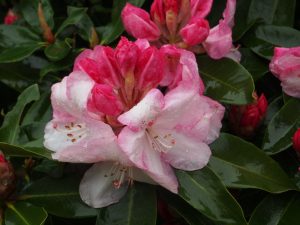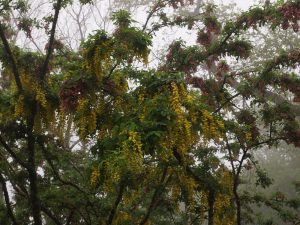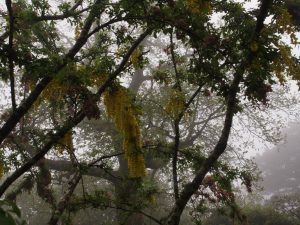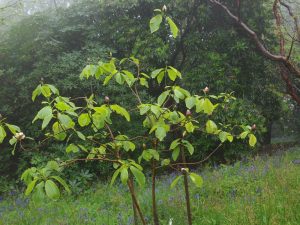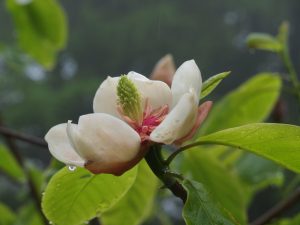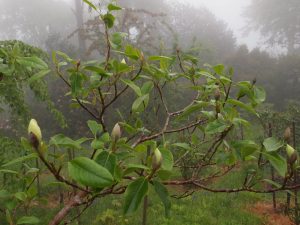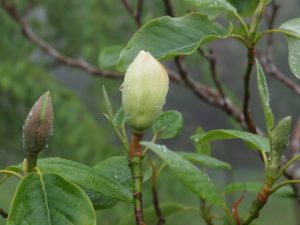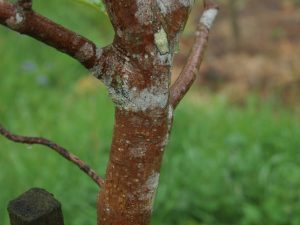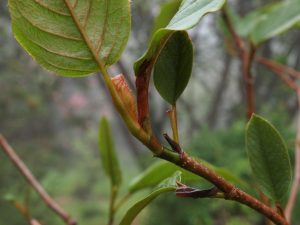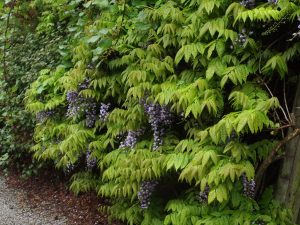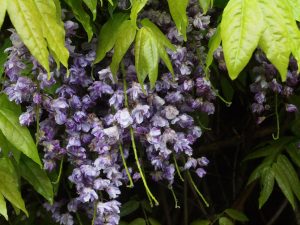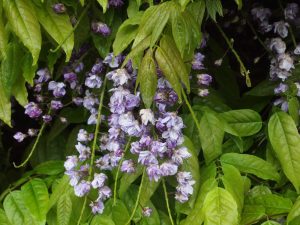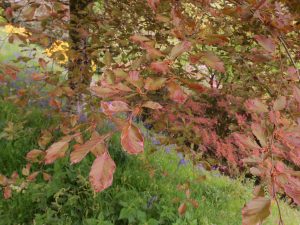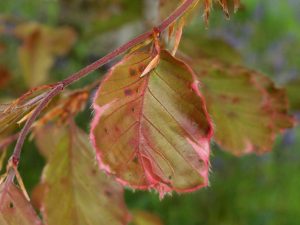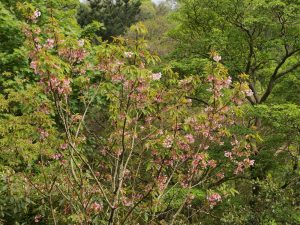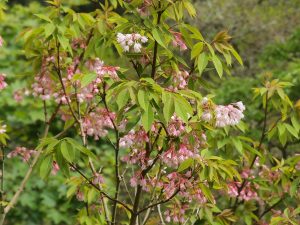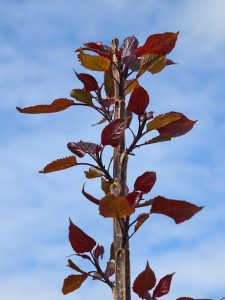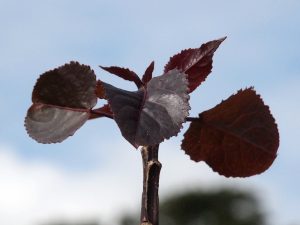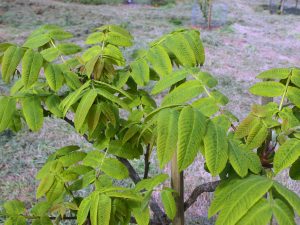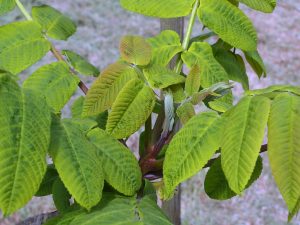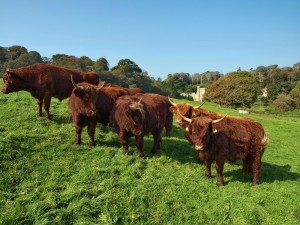2025 – CHW
Rhododendron ‘Crest’ a good clump in the Rockery Nursery bed to go out next year.
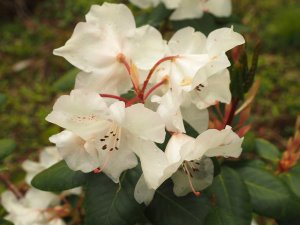
The Chelsea stand is taking shape and Giles has arrived with the water feature. Still a very long way to go yet and only 4 days more for it to be complete. The pool area is, as usual, leaking everywhere.
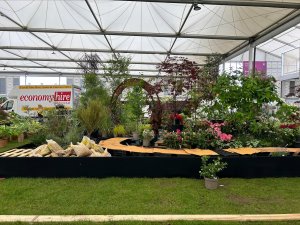
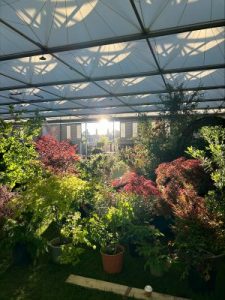
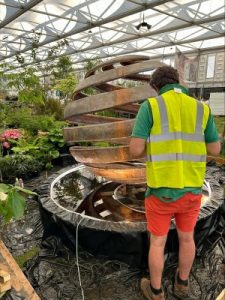
The weather has turned and the new growth is luxuriant after the rain. A search for new things today.Carya cordiformis coming into leaf. A very distinctive new leaf and habit and this is the second species seen in a few days.
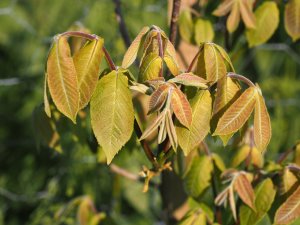
2021 – CHW
A welcome sight. Large puddles outside the front door in what would have been Chelsea Flower Show week. A dry summer looks less of a worry for the garden.
2020 – CHW
We are now in a full blown recession. Recessions mean unemployment and they hurt the poorer sections of society. Looking at it objectively, the worst repercussions will be felt in Africa and third world countries, where recession means starvation and death, probably on an unprecedented scale in modern times.
Listening to the leader of a teaching union try to explain why it was not safe to partially open schools on 1st June despite them having been open in full for a month in Denmark, Sweden; reopening in France, Germany etc, despite all the scientific evidence about children and corona and despite the hardship to parents with young children in tiny flats/houses made me wonder which planet he is living on.
We may (thankfully) not see mass starvation in the UK but we are going to see extreme poverty getting worse with all the hardship and premature death which this may well bring. How can the teaching unions not see this as they try to deprive the young of a whole term’s education? Or do they have an obvious ulterior motive?
A visit to The Vean to check on some of the revamping of the shrubberies in lockdown. Not much progress in a week. Cannot have a fire in lockdown because of smoke is the excuse. But what is to burn was cut weeks ago and is totally dry!
Not sure which malus species this is but doing well. From where I was sitting in the dining room it looked like a Davidia but it was not!
Although we are now on the way to London I spent an hour looking at new plants yesterday evening. Half a dozen Stewartias (four species and one named cultivar) in the new planting area above the greenhouse will shortly be flowering; most for the first time as four to five year old plants from planting. Several Styrax in a similar state and two new cultivars about to show while we are away. A bit of cheating but so what!This new shrub is labelled Fiax barumina. Interesting foliage but I fear there is a mistake with the real name as I can find nothing in any reference books. Can anyone help identify this? Firmania seems a reasonable guess but it is not F. simplex.
Enkianthus serrulatus has flower clusters that hang down but, as its seed sets the seed cluster instead points upwards. I wonder how many other plants have this characteristic?
Two days’ rain, drizzle and sea fog has certainly done wonders for the new growth and general look of the garden. On the downside many of the best rhododendrons have been battered by the rain and are now quite useless for Chelsea. I am starting to seriously worry about what we might cut tomorrow morning.Rhododendron loderi ‘Pink Diamond’ is battered to bits and quite useless. Just a few flowers left with the colour faded.
2016 – CHW
Most of the day with Asia sorting the early rhododendron and enkianthus cuttings to take in the next two to three weeks. Mainly the scented ones. The rhododendron seeds sown the traditional way in moss and sieved topsoil are germinating like crazy and will now need protection from direct sunlight. Quite a success story but we will soon be short of room for it all. Another greenhouse I expect.
Fagus sylvatica ‘Purpurea Tricolor’ is coming into leaf by the Four in Hand. You have to look to the leaf edges to see rather tiny and irregular evidence of the third colour in the leaf.
Chelsea stand nearing completion when the awful news arrives that 22 largely pedigree cattle (almost 20% of the herd) have failed this week’s TB test and are shortly to be culled. Two more are ‘inconclusive’. Many of those to be killed have healthy baby calves which will now have to be hand reared with milk in a bucket. Calves denied their mother are difficult and dangerous to hand feed and some will pine away and die. Why do those pro badger fascists not give any credence to the cruelty of TB and killing cattle as opposed to supposedly ‘cuddly’ badgers. At least we may now get a Cornish badger cull from George Eustice in 2016. In the meantime our farm staff are both distraught and angry. TB testing every two months from now on and no sales of any of our pedigree cattle other than direct to the abattoir at much less than their true worth. Arthur, the farm manager, is close to giving up on our pedigree herd of Salers and suggests we use the derisory government compensation when it eventually arrives to buy 100 more Dorset ewes instead of replacements. I will think on that and cross breeding all the pedigree cows from now on. A whole farming policy and 15 years of deliberate breeding up the spout or, rather, up the brock.
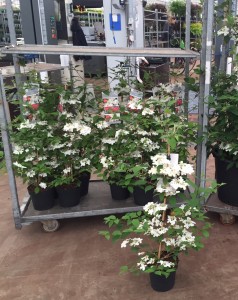
This disastrous news is countered by the arrival of Viburnum plicatum ‘Kilimanjaro Sunrise’ which is to be entered into the RHS Plant of the Year (Chelsea 2015) competition. 40 plus entries and we are shortlisted into the last 20 by Sunday evening.
The ‘new’ plant has to be new to the UK market and not exhibited before. Breeders of new plants (in our case a very nice Dutch firm and their even nicer sales rep Chris Campbell) have to provide plants to a Chelsea exhibitor to put on his stand. Hilliers had turned Chris down so he rang me at Burncoose only 10 days ago. We had been trying to find something to enter this hugely commercial and lucrative competition since it started five years ago but larger firms had trumped us particularly on last year’s winner, a hydrangea called Miss Saiori, which ended up on the Hilliers stand despite my best efforts entertaining the grower here the year before.Putting up a stand at Chelsea takes (this year) seven people (who have prepared for weeks if not months) working 10 plus hour days five to six working days each. We are very fortunate to have horticultural knowledge and artistic talent in Gerry and Louisa with Andrew and Ruta doing the heavy lifting of the props on the first day. John has an attention to detail which is critical and so we have a TEAM who are unrushed, unfussed, happy and enthusiastic. After 37 Chelseas I have seen much excellence and a few (self inflicted) disasters but this is all going well and we are finished in good time.
2003 – FJW
First deer seen in Castle Wood.
1991 – FJW
Still dry but mild and the garden flowers hang on well. Azaleas excellent. A few casualties from the great plant out, but the vast majority held up.
1986 – FJW
The latest year seen for some time. Hinomayo just coming. Camellias by no means over. Flowers hanging on well in cool weather. Saw first swallow.
1929 – JCW
M wilsoni opens, the early one. A flower or two of Nicholsoniana. Parviflora shows colour. M brozzoni has been very good and so the various Conspiscus. Wilson’s Aperantha is flowering fairly well.
1920 – JCW
Forrest came. We are ten days ahead of 1919 and Magnolia wilsoni is the best thing open with the Engine House Azaleas. It is about mid season for Azaleas.
1919 – JCW
Auklandii is very good indeed, but are frosted in the 40 Acres. Roylei is good. The Standish plants are very good. Loderi is very nice. Bluebells at their best. May very scarce. Azaleas have hardly started.
1914 – JCW
Auklandii’s now nearly over. 14 to 1500 flowers on the best 40 Acres plants. C montana is very good. Azaleas about their best.
1910 – JCW
Just as above (1909) in point of time, plenty of moisture and it is a fair growing spring.
1909 – JCW
Auklandii would be splendid but for the want of rain. R roylei nice, a few Azaleas, a few Waters rhodo’s. Van Tubergens wane. Mrs Butler a few open. R falconeri fine but for heat.
1906 – JCW
Auklandii never so good as now.




